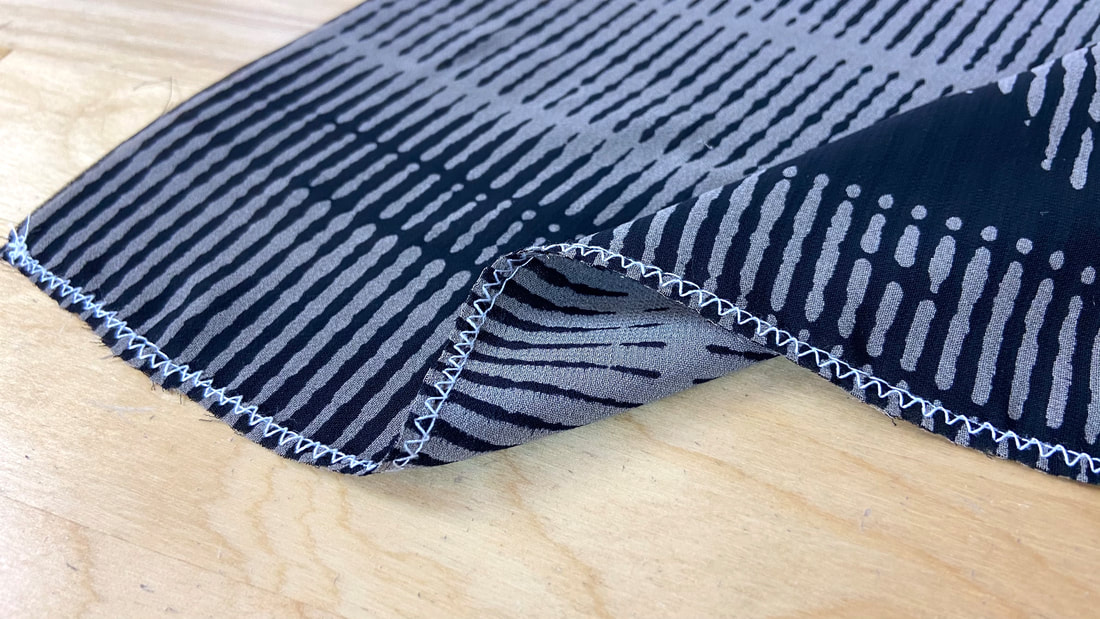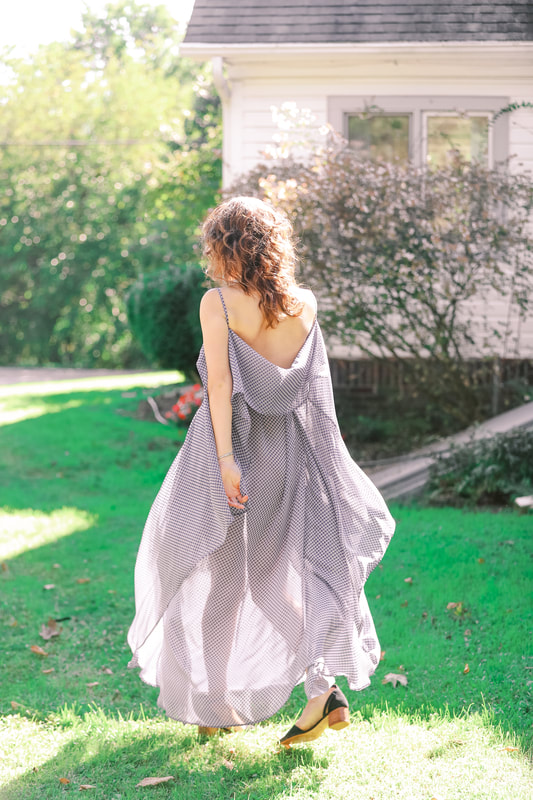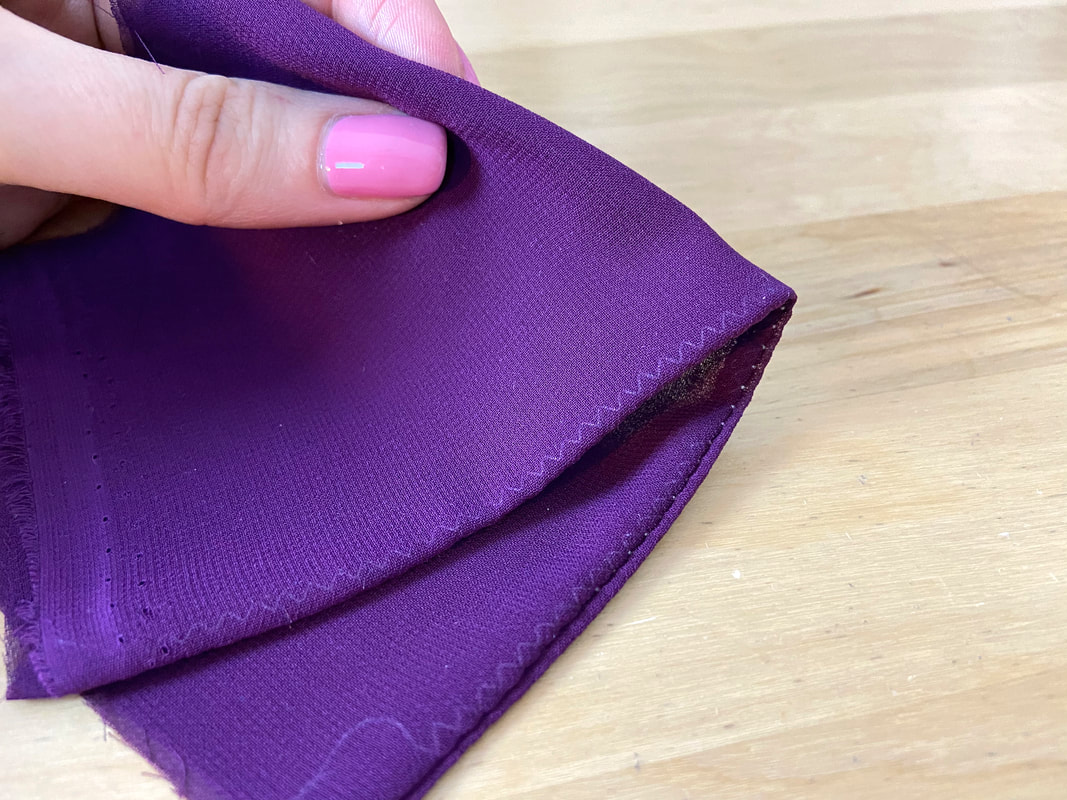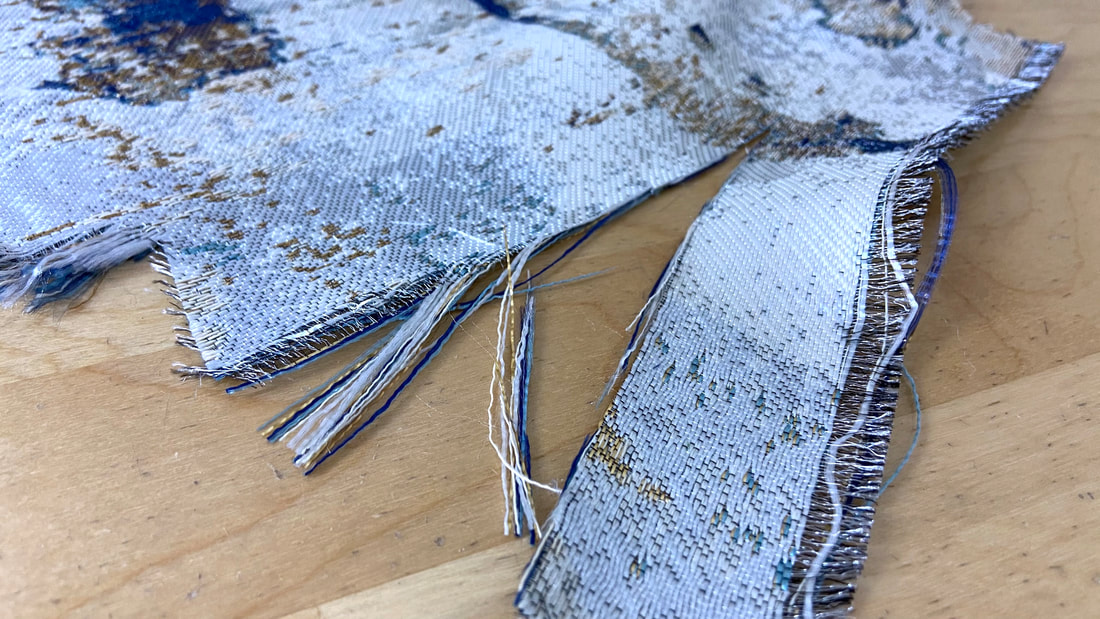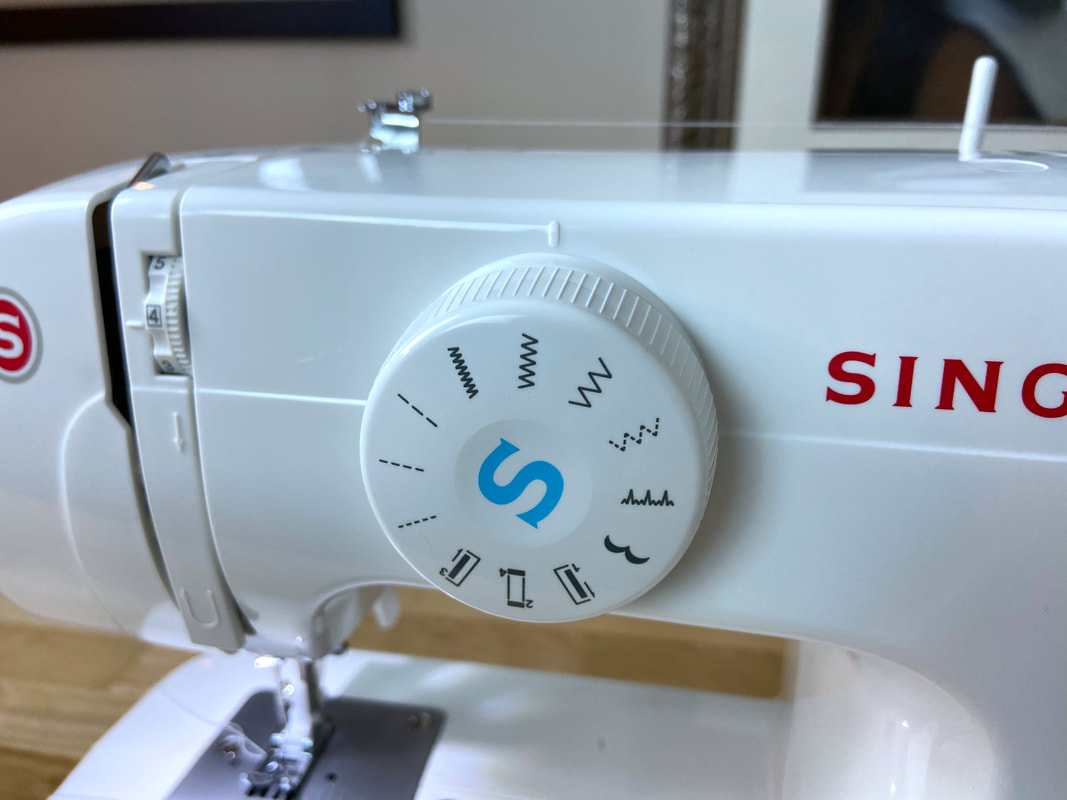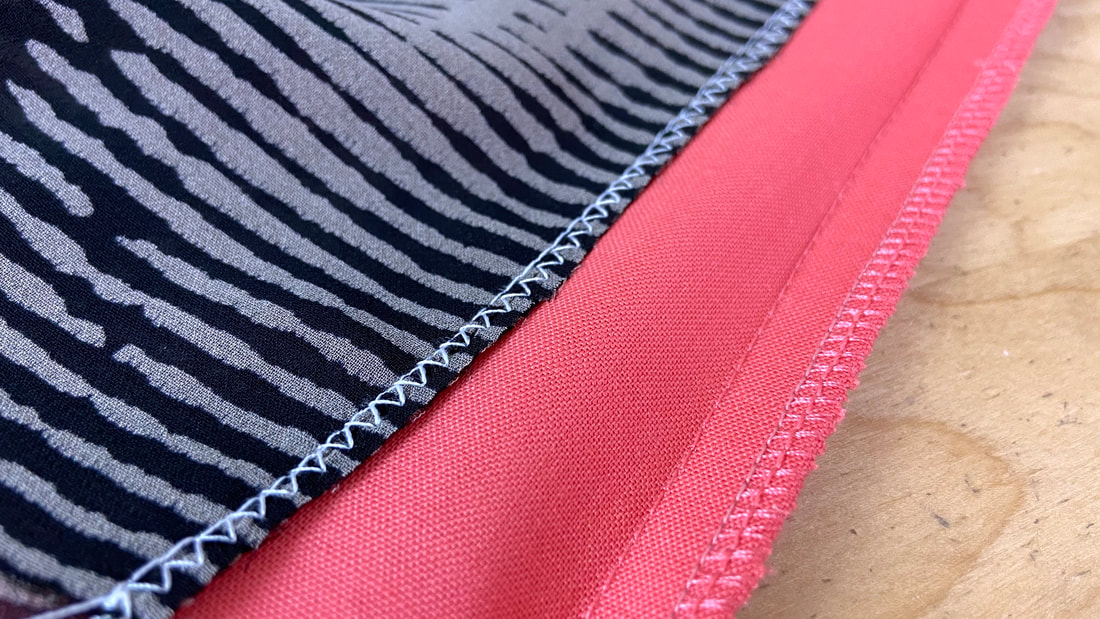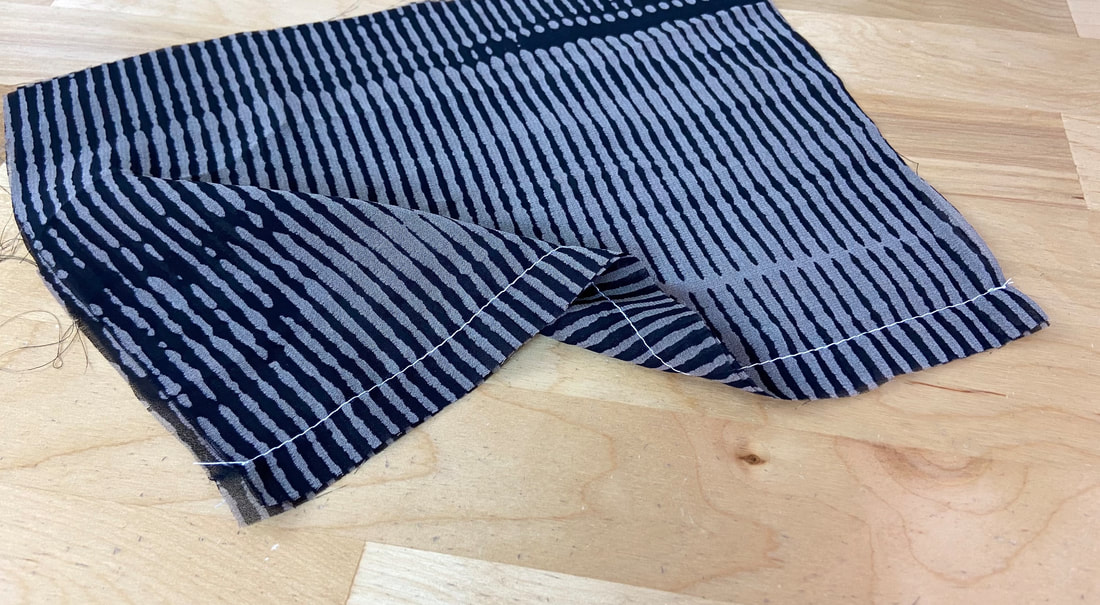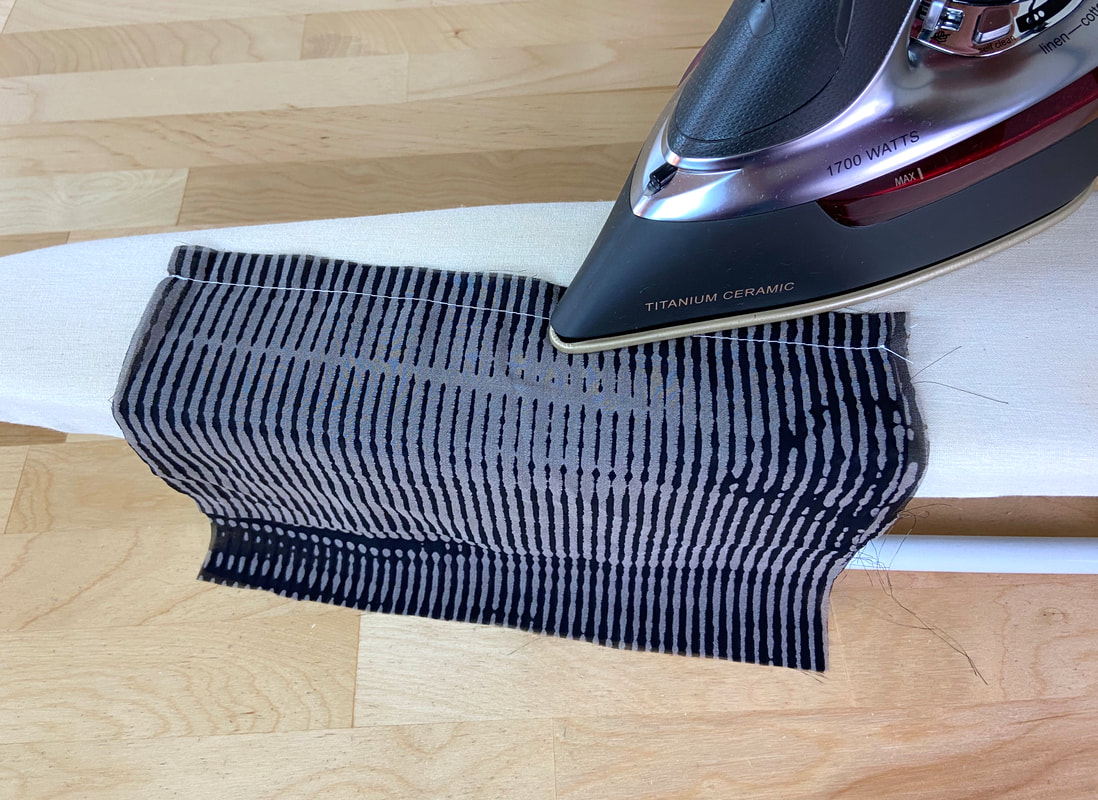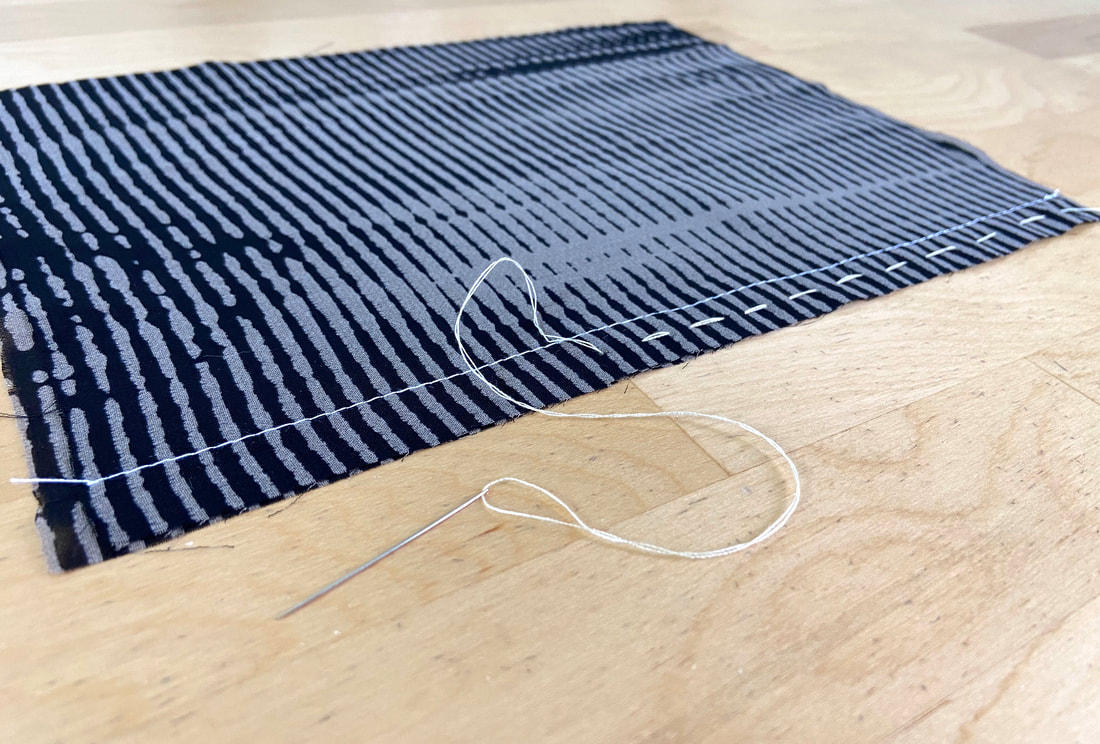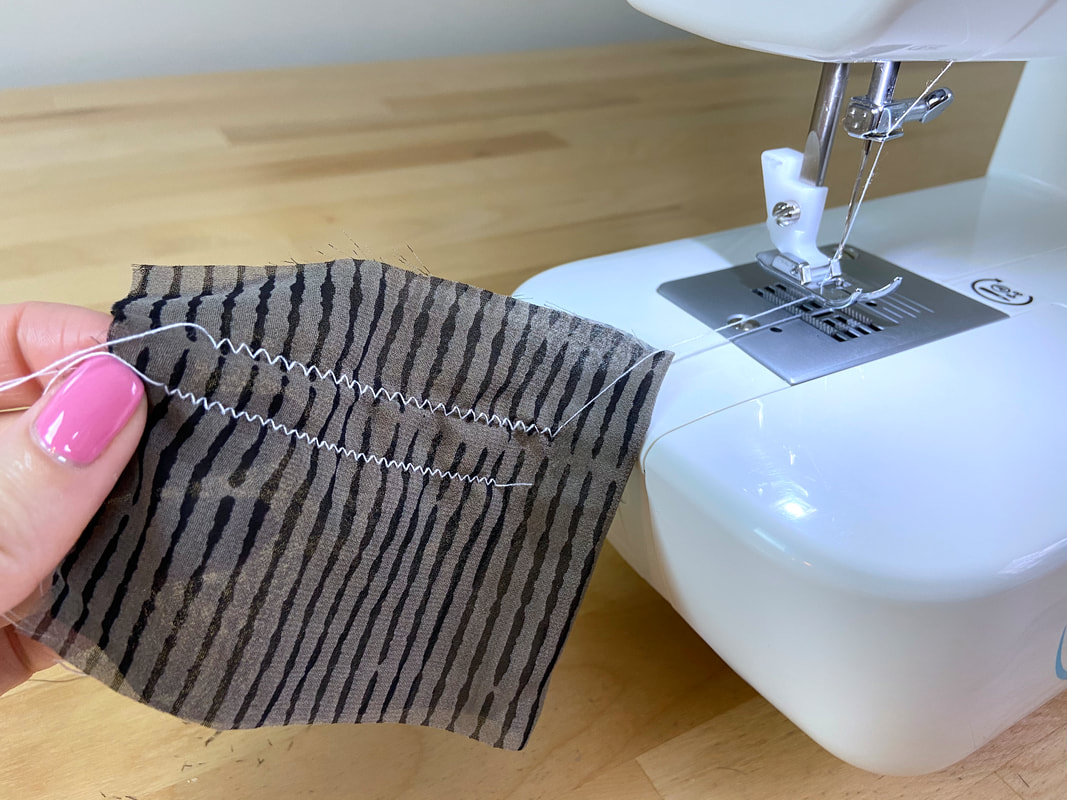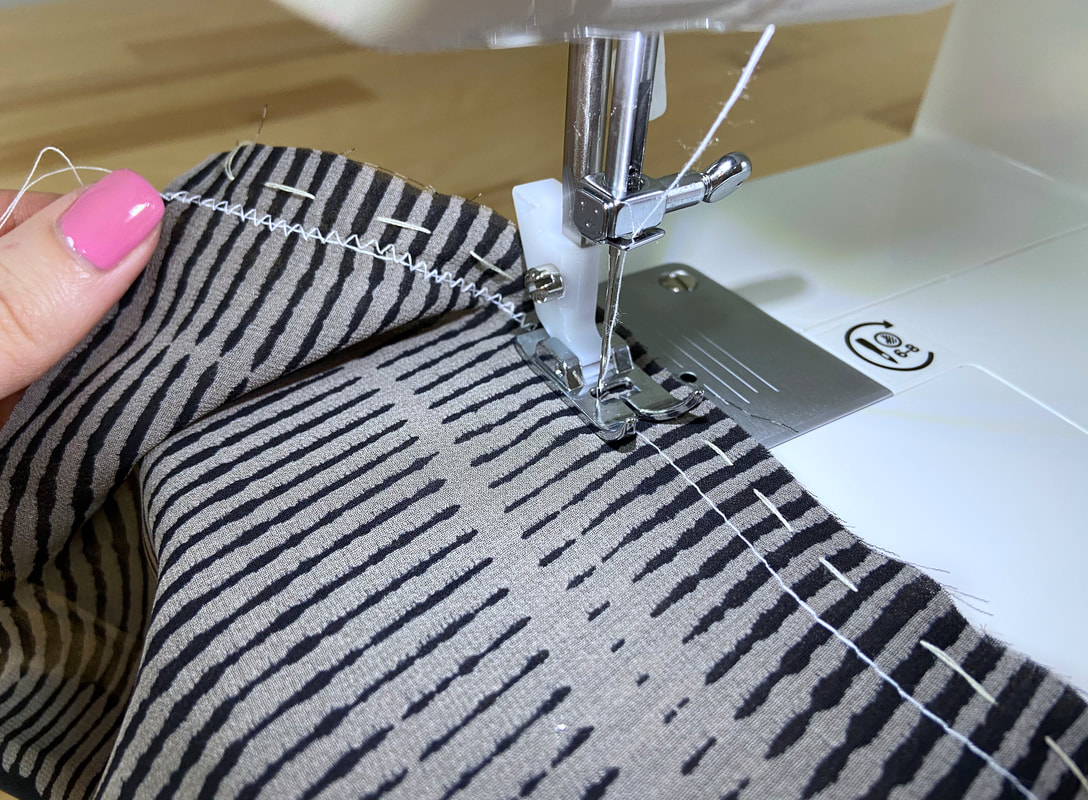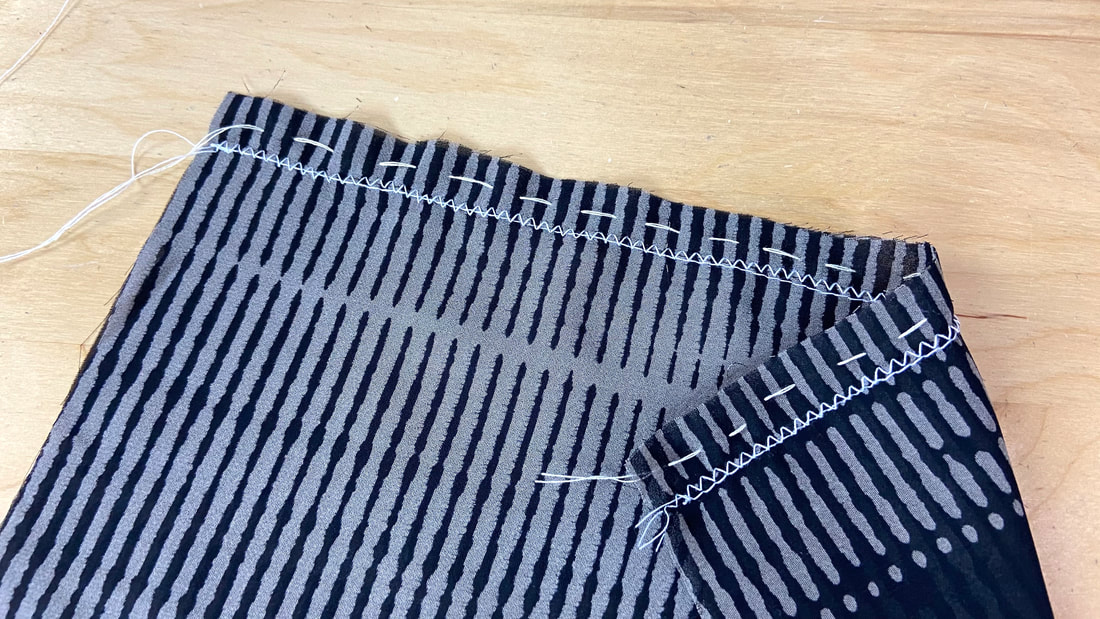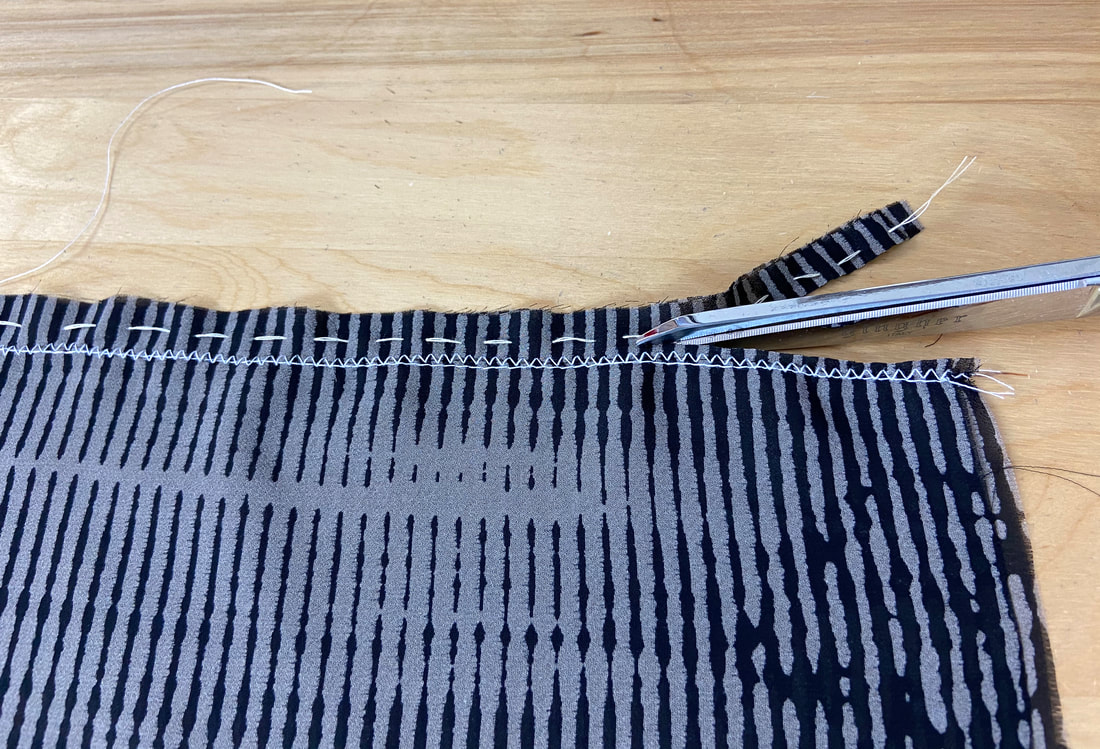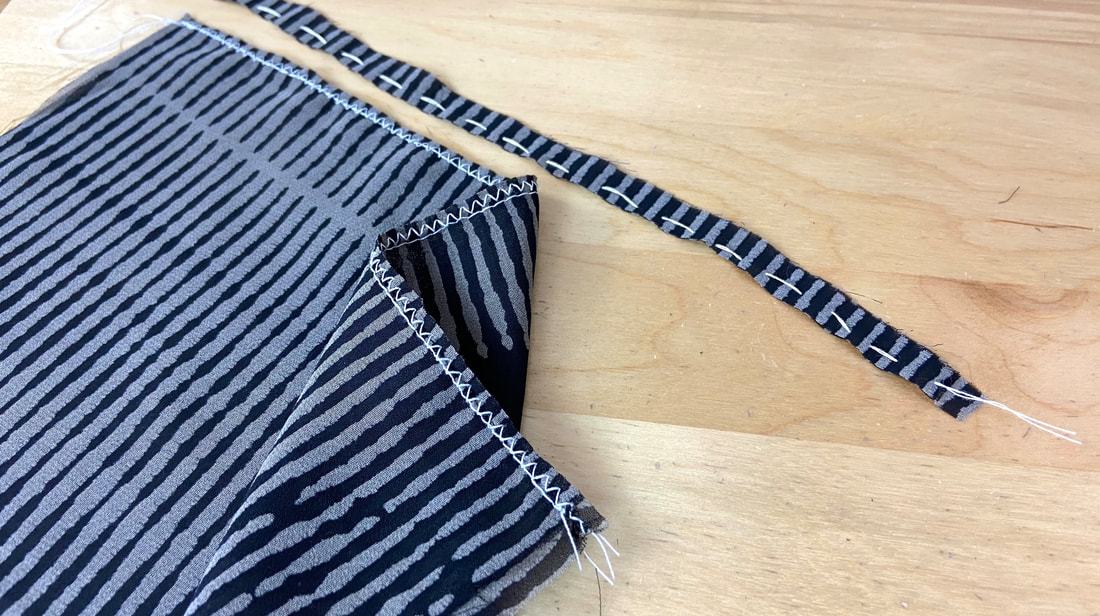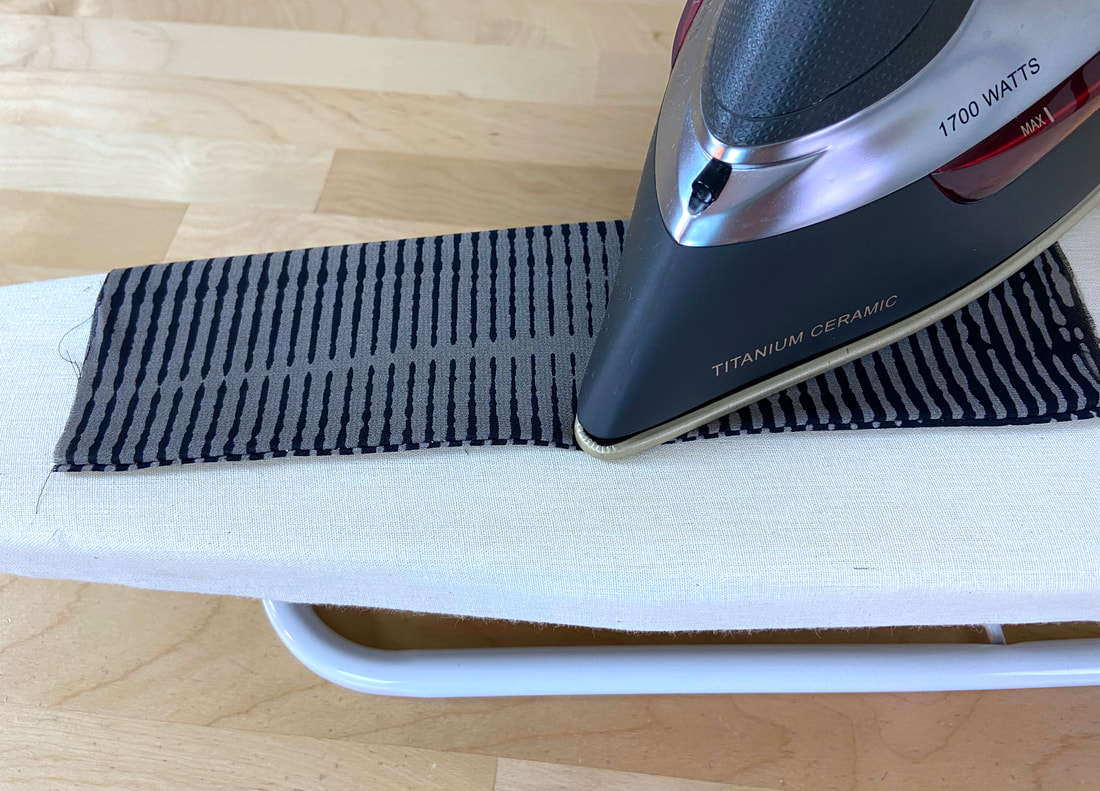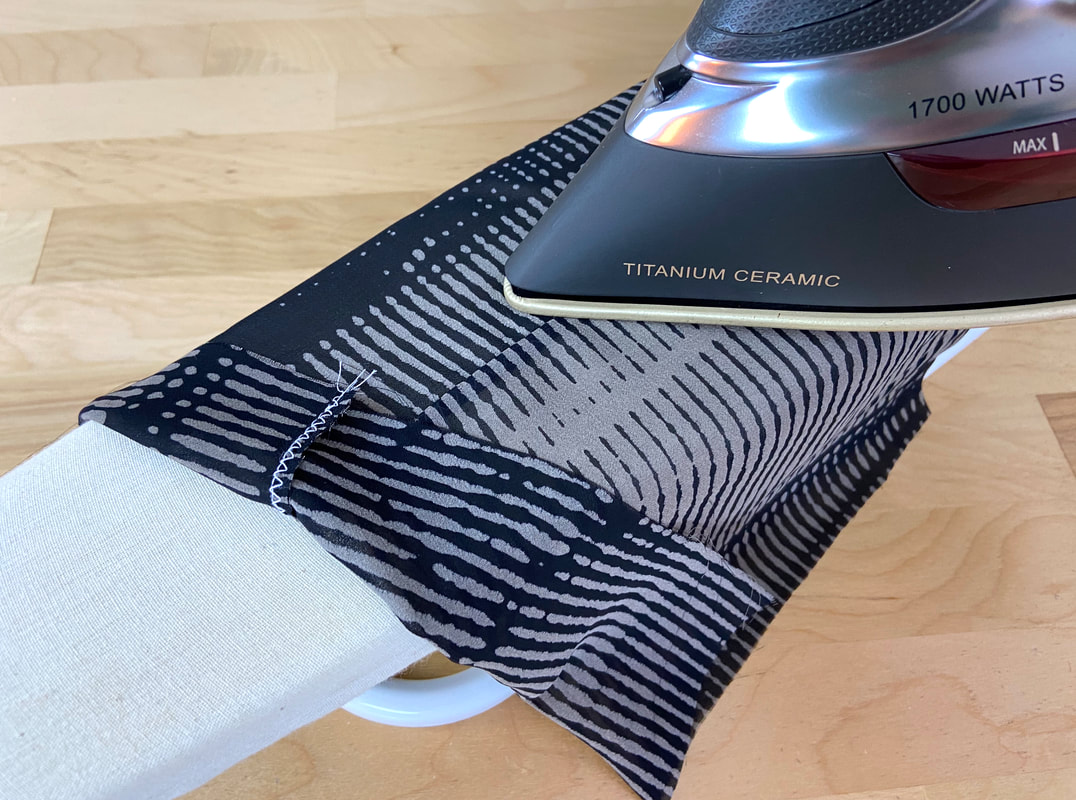A hairline seam finish is applied using a zigzag or narrow serging stitch. In a hairline application, the seam allowance is trimmed as narrow as the width of the finishing stitch itself. Thus, the end result is not only a seam that is pleasing to look at but also one that has little-to-no bulk.
As you might have guessed, perhaps by the name itself, this delicate seam finish is most commonly used on sheer, lightweight, fine fabrics.
A hairline stitch is applied on enclosed garment portions like cuffs, collars and lapels, that are constructed of sheer fabrics. In this case, the inside of the seam finish is visible on the face of the garment thus not only should it prevent the edges from fraying, it should also be aesthetically pleasing.
While it is a great application for areas of the garment that do not receive a lot of pull and strain, hairline techniques are not as durable as conventional seam finishes. For that reason, they are not conventionally used on regular seams that hold the garment together structurally.
A hairline seam finish should also not be used with loosely-woven fabrics or those that unravel heavily. The narrow overedge stitching will simply not be efficient enough to contain and lock the cut fabric edge threads.
As noted above, to apply a hairline finish, you will need to use either the zigzag stitch setting on your home sewing machine or a narrow serging stitch if you own an overlock sewing machine. If using the zigzag finish, the hairline technique requires that the stitch is applied at a narrow, denser setting.
As you’ll see below, the zigzag is applied close to the seam’s stitch line. The excess seam allowance is then trimmed close to the edge of the zigzag stitching.
A hairline finish is not to be confused with a regular zigzag or serged seam finish. For one, the hairline technique always encloses all seam allowance edges together. In a hairline application, the zigzag stitch settings are different, requiring a denser narrow stitch. In a regular zigzag seam finish, the stitch is applied next to the seam allowance edge while a hairline finish requires the zigzag to be applied right next to the seam stitch- in this case, a large portion of the seam allowance is actually trimmed off.
Sewing A Hairline Seam Finish
1. Machine stitch or baste a conventional seam.
Check out this tutorial for information on sewing a regular straight seam: How To Sew A Straight Seam
To flatten the seam allowance layers, iron the stitching in the direction it was applied.
2. If the fabric is flimsy and difficult to control, as many sheer fabrics are, you may want to consider hand basting the seam allowance layers together along the center as shown. Doing so will keep all layers flat during the zigzag (or serging) application process.
3. On your home sewing machine, set your zigzag stitch to a narrow, dense setting. In order to achieve the best setting possible, pre-test a scarp piece of the same fabric.
4. Apply the zigzag directly on top of the seam stitch completed in Step 1.
The straight seam stitch (from Step 1) provides durability and also serves as a guide for applying the zigzag stitching.
5. Last but not least, trim the excess seam allowance close to the zigzag edge being very careful not to accidentally clip through it.
If sewing an enclosed edge: turn the fabric layers on their face side, bring the finished edge out, and iron to flatten it as shown.
If applying the hairline finish on a regular seam: iron the seam to a single direction as shown above.

